Charles Ray’s moment in the city of lights: ‘Sculpture is a meaning machine’
American sculptor Charles Ray is dominating Paris with a double retrospective at the Bourse de Commerce and Centre Pompidou. Materially deft and disturbingly human, Ray’s shows establish him as one of the most important sculptors alive

Charles Ray gets down on the floor of the Bourse de Commerce – Pinault Collection and shifts to one thigh, seated like a child. Stretching out his arm, he shows how he tried different poses – for ‘a couple of years’ – before selecting one for his sculpture, The New Beetle (2006), which portrays a boy playing with a toy car. Ray wants the viewer to get down on the ground, too, to feel the boy’s presence and the floor as an ‘infinite plane of existence’ linking past, present and future. ‘I believe if a sculpture can move you physically it can move you intellectually,’ he says.
At 68, Ray has established himself as one of the most important sculptors alive, so it is surprising that he has never before had a solo museum exhibition in Paris. He is making up for lost time with a double retrospective: 21 works at the Centre Pompidou and 17 at the Bourse de Commerce. For a man who works slowly, completing maybe four pieces a year, this represents more than one-third of his total sculptural output.
The exhibitions are complementary, with different curators, and a ticket to one gives viewers a reduced ticket price to the other, a brisk ten-minute walk away. They are not chronological, but the Pompidou show includes some of Ray’s early works from the 1970s when he used his own body as a material. (For example, Plank Piece I and II (1973) are photos of him hanging lifelessly, pinned between a plank of wood and the wall.) The Bourse de Commerce includes seven of his most recent pieces, shown to the public for the very first time.

Ray, Young man, 2012, Pinault Collection © Charles Ray.
Dressed casually in dark jeans and layered T-shirts, with a wool beanie cap, Ray is both shy and Midwestern-friendly. He was born in 1953 in Chicago, where his parents ran a commercial art school. They sent him to a Catholic military high school at age 13. He studied sculpture at the University of Iowa, where he was exposed to the high modernism of Anthony Caro, an enormous influence on his approach to space. In 1981, he moved to Los Angeles to teach at UCLA, and he has lived there ever since.
His work interacts with the history of Western sculpture, from the Greeks to Rodin. When in Paris, he can often be found visiting the Louvre. ‘I don’t go and study Archaic sculpture, or Renaissance sculpture,’ he explains. ‘I don’t see “time”. To me, sculpture is a meaning machine. It comes forward and I go backwards.’ His sculptural process is a combination of handcrafted and industrial. After taking a 3D scan of a model, he and his studio make clay patterns to decide upon scale and details, a step that can take years. For the final sculpture, he uses a range of materials – stainless steel is a favourite, not cast but machined from solid blocks. The results can weigh nearly 20 tons.

Exhibition view of Charles Ray at Centre Pompidou, Paris, 2022.
The exhibition at the Pompidou is anchored by two relatively fragile works, representations of ruins placed inside open, box-like structures that put a distance between viewer and sculpture. The first, Unpainted Sculpture (1997), shows a Pontiac Grand Am that has been destroyed in a fatal collision. But what looks like twisted metal is actually fibreglass. Ray (who himself had a serious accident last year) took the original vehicle apart, duplicated all 86 pieces, and reassembled them, painting the resulting sculpture a uniform grey. ‘The spirit of the driver may be above, but the real ghost has become the car’, says curator Jean-Pierre Criqui.
Across the room, Hinoki (2007) is a sculpture of a natural ruin, a work nearly 10m long that has not left its home at the Art Institute of Chicago until now. Its genesis was a fallen redwood tree that Ray spotted in a field. He eventually brought it to his studio, cut it into sections, made fibreglass patterns of its pieces, then sent them to Osaka, where Japanese artisans meticulously carved a replica out of cypress wood. Like the original, the sculpture is destined to decay with time.
Receive our daily digest of inspiration, escapism and design stories from around the world direct to your inbox.
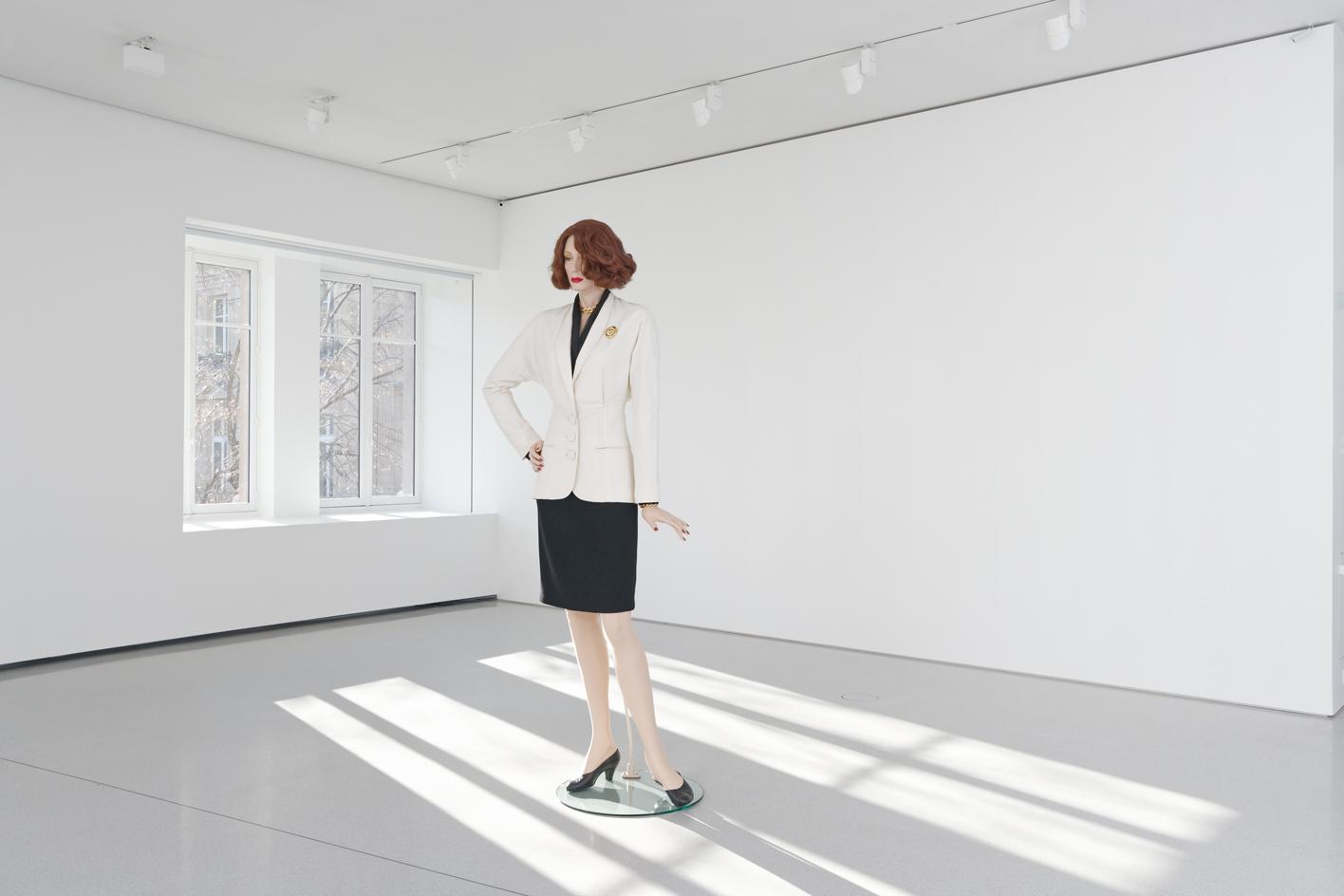
Fall ‘91, 1992 , Glenstone Museum, Potomac. Exhibition view of Charles Ray at the Bourse de Commerce – Pinault Collection, Paris, 2022
Before turning to figurative sculpture in the 1990s, Ray, who once worked as a department store janitor, created sculptures of mannequins. Fall ’91 (1992) is a fibreglass female dressed in a power suit. She has the features of a conventional mannequin, from the body proportions to the blank look in her eyes. The only thing Ray modified was the scale – she is a towering 2.44m tall.
Another iconic sculpture that plays with size and scale is Family Romance (1993) – father, mother, son and daughter, all naked, all holding hands, and all 1.35m in height. It is a disturbing work, and Freudian interpretations abound, but the artist finds the meaning in the space where their hands meet.
Some of Ray’s latest works are hand-sculpted from paper in the studio; he refers to them as ‘drawings’ made from space and time. One is at the Pompidou, a woman pleasuring herself in a posture like a Reclining Venus. The surface is covered with colourful flowers – an insomniac, Ray paints flowers at night. He has named the work Portrait of the Artist’s Mother, a sly wink at his fellow American James McNeill Whistler (whose mother hangs at the Musée d’Orsay).

Charles Ray, Horse and Rider, 2014 . © Charles Ray. Pinault Collection Parvis de la Bourse de Commerce – Pinault Collection, Paris, 2021 . Courtesy Pinault Collection.
At the Bourse, the show starts outside, with a stainless steel statue called Horse and Rider (2014) that is Ray’s response to equestrian monuments. This rider, made of solid stainless steel, is slumped, unsure, and holding no reins. ‘It’s me,’ explains Ray. ‘I’m an old man and tired. My horse is old and tired. It’s not Joan of Arc on a pedestal, I’m down on the ground with you and your neighbour.’
While he’s brought the hero monument (literally) down to earth, inside the Bourse he elevates the humble. A new, seated sculpture of a homeless man, Jeff (2021), is carved in white marble. Ray sees him as a modern mocking of Christ – slouched, exhausted by life, yet dignified. Elsewhere, Burger (2020) in white fibreglass, portrays a large man seated on a stool, fully focused on the burger in his hands; the artist compares it to the eucharist. (Though Ray is not a practising Catholic, he says the structure of Christianity ‘interests him philosophically’.)


Top: Unbaled Truck, 2021. Courtesy Matthew Marks Gallery. Above: The New Beetle, 2006, Glenstone Museum, Potomac. Exhibition view at the Bourse de Commerce – Pinault Collection, Paris, 2022.
In the Bourse’s rotunda, the boy playing with his car appears achingly vulnerable, especially when contrasted with the nearby Unbaled Truck (2021). Unlike Ray’s other sculptures, this is a real truck that he had crushed and scanned in 2014 to make a sculpture in steel. He subsequently decided to ‘unbale’ it, carefully hammering the vehicle back into its original shape, a process that took five years. Curator Caroline Bourgeois calls its resurrection ‘the most utopian work I’ve ever seen’.
The same child has grown a few years older and much larger in the work Boy with Frog (2009). The French businessman and art collector François Pinault originally commissioned the statue to stand outside his new Punta della Dogana museum in Venice. Ray was scheduled for major heart surgery three weeks later and says the image of a boy contemplating a frog immediately came to mind. ‘The first thing we do in secondary school, in science class, is take a frog apart, look inside, and see the heart. I’ve wondered over the years if the frog is also my heart, if that’s where it came from.’ (The sculpture left Venice after four years, following a Facebook campaign to remove it.)
Ray says his works are ‘made of space’, and they need space to be seen. Both museums have complied; the Bourse removed walls and window treatments to make the second floor as wide open as possible. The only work hidden behind a wall is Oh! Charley, Charley, Charley… (1992), a sex orgy of eight identical men, all of them Ray. But what might seem pornographic is, for the artist, an exercise in composition, as well as a comment on profound solitude. It is the opposite of Brâncuși’s The Kiss, where two figures meld into one. Look closely, and none of the participants in Ray’s orgy actually touch. ‘I was thinking your lover is not there,’ he says. ‘Your lover is just a projection of yourself. There’s only one person in the universe and it’s you.’


Top: Oh! Charley, Charley, Charley..., 1992 Above: Study after Algardi (left) Concrete Dwarf, both 2021 © Courtesy Matthew Marks Gallery. Exhibition views of Charles Ray at the Bourse de Commerce – Pinault Collection, Paris, 2022.
The final room contains three of Ray’s works from 2021. Study After Algardi is a white paper sculpture 3.5m high, based on a 17th-century crucifix, and seeming to hover a few inches from the wall. Facing it, Doubting Thomas, in white carbon fibre, shows two life-sized naked figures, Jesus raising his arm for the Apostle Thomas to inspect his injury. Tension is created by the space between Thomas’s finger and the wound.
Between these two lightweight, luminous works, is a dark concrete figure; a clothed dwarf lying face down on a slab. The concrete is solid and cold. Ray touches the dwarf’s forehead, and says, ‘If you believe men and women have souls, you have to think he was cast out of the heavens. If you don’t believe we have souls, you have to believe that God is gravity.’
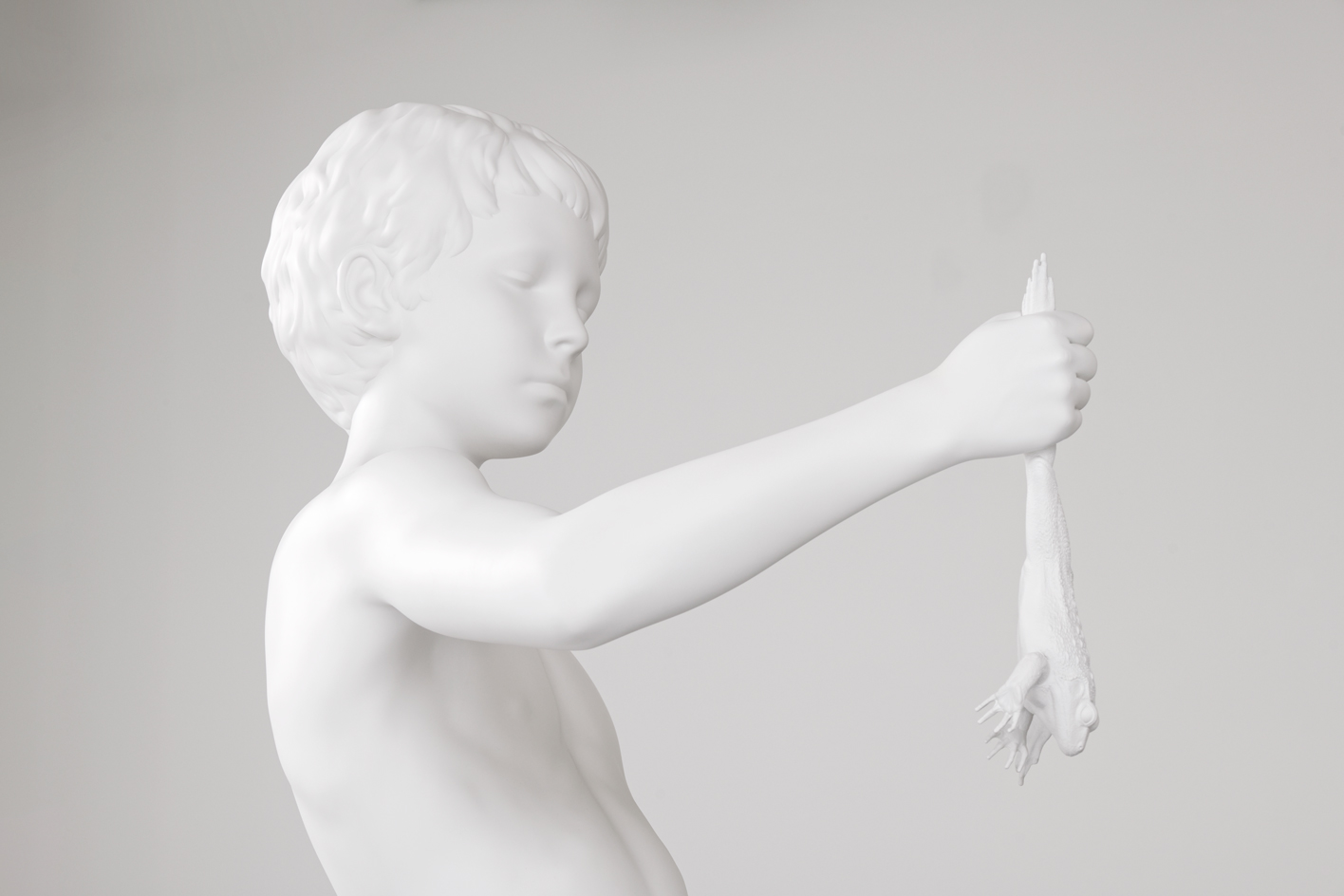
Boy with Frog, 2009 © Pinault Collection. Exhibition view of Charles Ray at the Bourse de Commerce – Pinault Collection, Paris, 2022.

Exhibition view of Charles Ray at the Centre Pompidou, Paris, 2022.
INFORMATION
Charles Ray’s carte blanche exhibitions at the Bourse de Commerce – Pinault Collection and at the Centre Pompidou run until 6 June and 20 June 2022 respectively. pinaultcollection.com; centrepompidou.fr
Amy Serafin, Wallpaper’s Paris editor, has 20 years of experience as a journalist and editor in print, online, television, and radio. She is editor in chief of Impact Journalism Day, and Solutions & Co, and former editor in chief of Where Paris. She has covered culture and the arts for The New York Times and National Public Radio, business and technology for Fortune and SmartPlanet, art, architecture and design for Wallpaper*, food and fashion for the Associated Press, and has also written about humanitarian issues for international organisations.
-
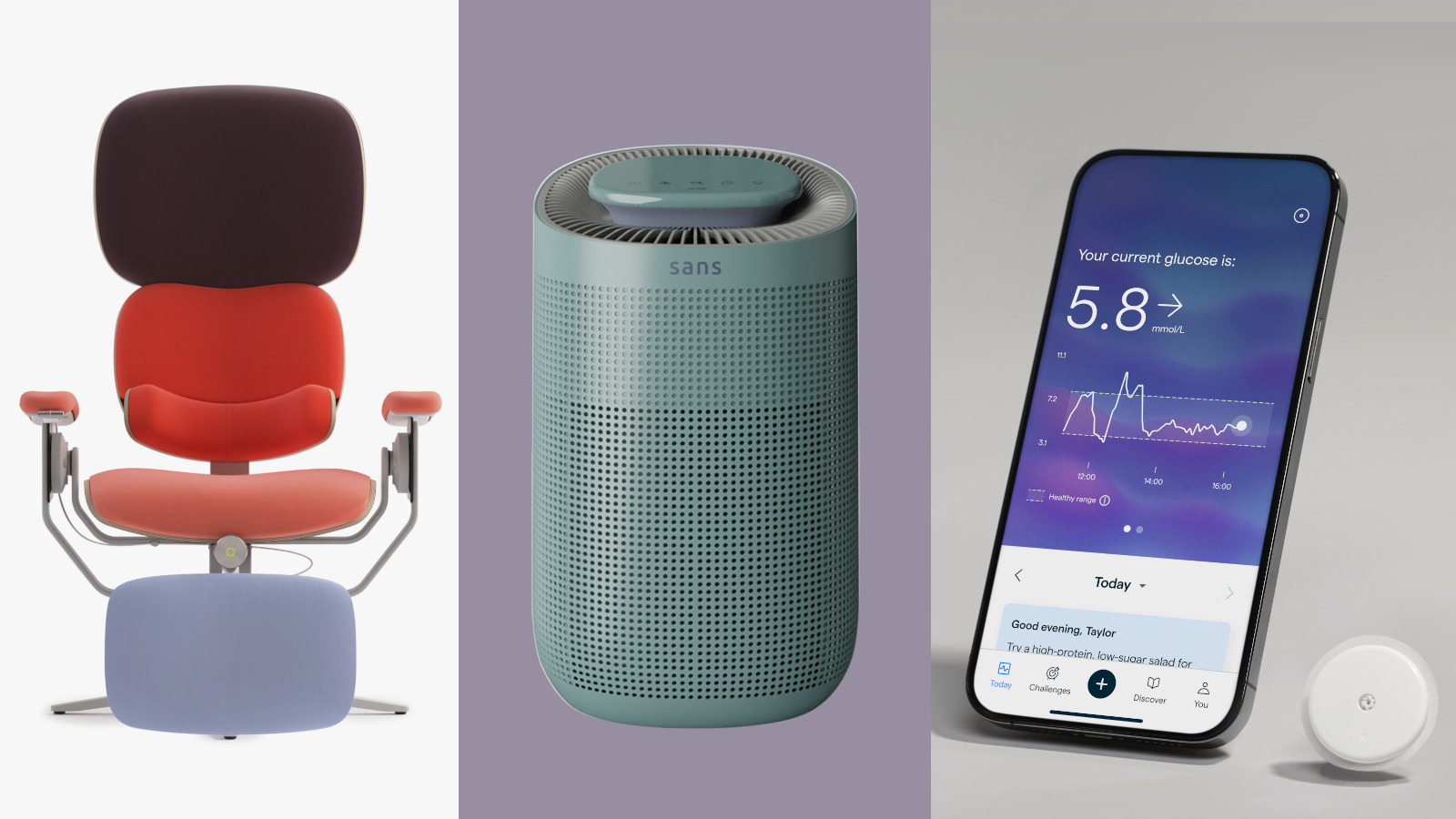 New tech dedicated to home health, personal wellness and mapping your metrics
New tech dedicated to home health, personal wellness and mapping your metricsWe round up the latest offerings in the smart health scene, from trackers for every conceivable metric from sugar to sleep, through to therapeutic furniture and ultra intelligent toothbrushes
-
 Out of office: The Wallpaper* editors’ picks of the week
Out of office: The Wallpaper* editors’ picks of the week'Tis the season for eating and drinking, and the Wallpaper* team embraced it wholeheartedly this week. Elsewhere: the best spot in Milan for clothing repairs and outdoor swimming in December
-
 How Stephen Burks Man Made is bringing the story of a centuries-old African textile to an entirely new audience
How Stephen Burks Man Made is bringing the story of a centuries-old African textile to an entirely new audienceAfter researching the time-honoured craft of Kuba cloth, designers Stephen Burks and Malika Leiper have teamed up with Italian company Alpi on a dynamic new product
-
 Nadia Lee Cohen distils a distant American memory into an unflinching new photo book
Nadia Lee Cohen distils a distant American memory into an unflinching new photo book‘Holy Ohio’ documents the British photographer and filmmaker’s personal journey as she reconnects with distant family and her earliest American memories
-
 Ed Ruscha’s foray into chocolate is sweet, smart and very American
Ed Ruscha’s foray into chocolate is sweet, smart and very AmericanArt and chocolate combine deliciously in ‘Made in California’, a project from the artist with andSons Chocolatiers
-
 Jamel Shabazz’s photographs are a love letter to Prospect Park
Jamel Shabazz’s photographs are a love letter to Prospect ParkIn a new book, ‘Prospect Park: Photographs of a Brooklyn Oasis, 1980 to 2025’, Jamel Shabazz discovers a warmer side of human nature
-
 The Hammer Museum in Los Angeles launches the seventh iteration of its highly anticipated artist biennial
The Hammer Museum in Los Angeles launches the seventh iteration of its highly anticipated artist biennialOne of the gallery's flagship exhibitions, Made in LA showcases the breadth and depth of the city's contemporary art scene
-
 Thomas Prior’s photography captures the uncanny fragility of American life
Thomas Prior’s photography captures the uncanny fragility of American lifeA new book unites two decades of the photographer’s piercing, uneasy work
-
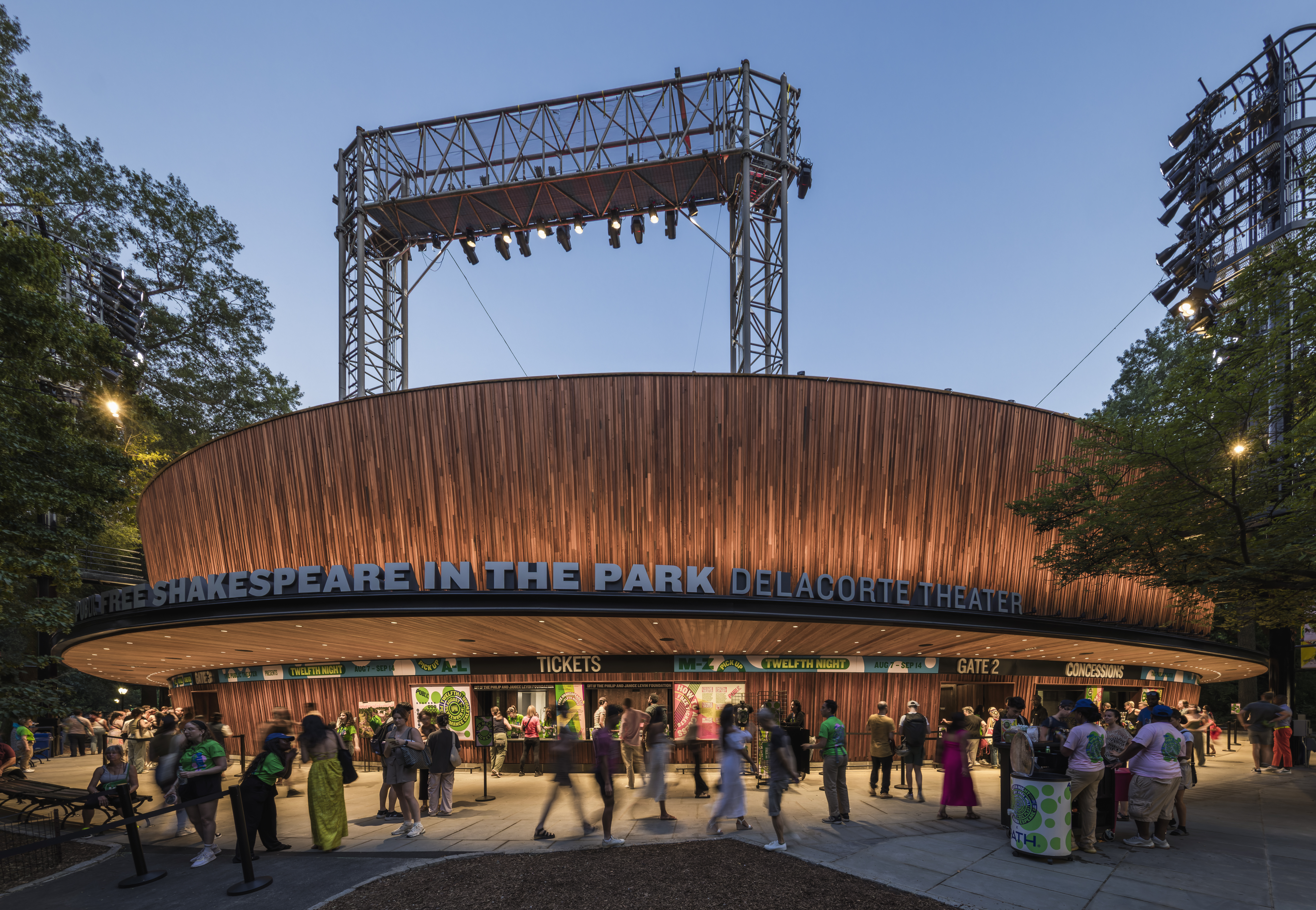 Central Park’s revitalised Delacorte Theater gears up for a new future
Central Park’s revitalised Delacorte Theater gears up for a new futureEnnead Architects helmed an ambitious renovation process that has given the New York City cultural landmark a vibrant and more accessible future
-
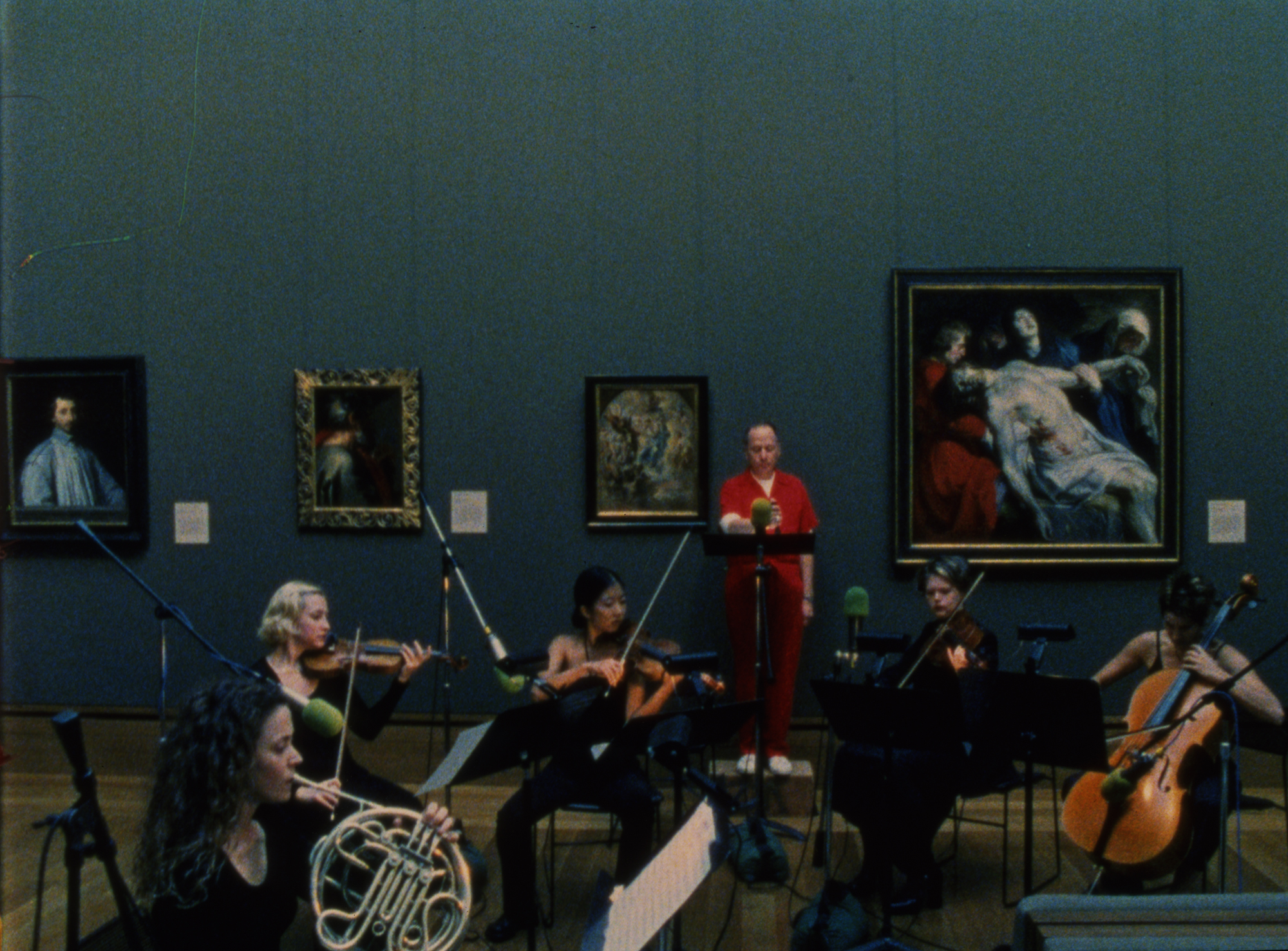 Stephen Prina borrows from pop, classical and modern music: now MoMA pays tribute to his performance work
Stephen Prina borrows from pop, classical and modern music: now MoMA pays tribute to his performance work‘Stephen Prina: A Lick and a Promise’ recalls the artist, musician, and composer’s performances, and is presented throughout MoMA. Prina tells us more
-
 Curtains up, Kid Harpoon rethinks the sound of Broadway production ‘Art’
Curtains up, Kid Harpoon rethinks the sound of Broadway production ‘Art’He’s crafted hits with Harry Styles and Miley Cyrus; now songwriter and producer Kid Harpoon (aka Tom Hull) tells us about composing the music for the new, all-star Broadway revival of Yasmina Reza’s play ‘Art’